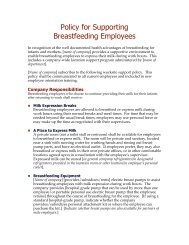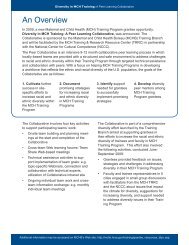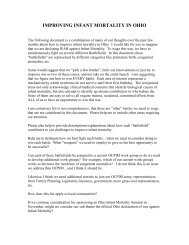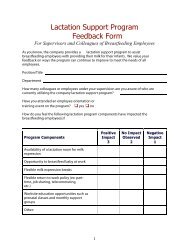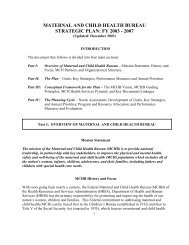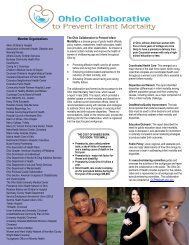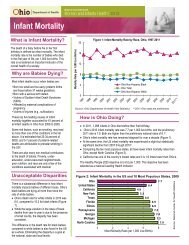A Framework for Evaluating Systems Initiatives
A Framework for Evaluating Systems Initiatives
A Framework for Evaluating Systems Initiatives
- No tags were found...
You also want an ePaper? Increase the reach of your titles
YUMPU automatically turns print PDFs into web optimized ePapers that Google loves.
Finally, the evaluation incorporated case studies of select school readiness programs into its design.These case studies provided a better picture of the initiative’s scale-up process and implementation.Case studies used interviews and focus groups with staff and parents, as well as program observations.The North Carolina Smart Start Initiative evaluation is another example in the scale category. The FrankPorter Graham Child Development Institute at the University of North Carolina at Chapel Hill evaluatedSmart Start during its first ten years while it was being scaled up statewide. The evaluation respondedto questions about how the scale-up process was working, whether Smart Start improved child carequality, and whether Smart Start was good <strong>for</strong> children. Over 35 studies were conducted during thoseten years.Evaluators used a range of evaluation designs to assess Smart Start outcomes and impacts at theprogram and child levels. None were experimental, although many were quasi-experimental. Forexample, four large preschool program samples were observed in 1994, 1996, 1999, and 2001 todocument quality over time and to examine the relationship between quality increases and programparticipation in Smart Start improvement activities. Child school readiness data were also collected.In addition, several qualitative studies examined Smart Start scale up through the local partnership lens.These studies explored the needs of local partnerships, their decision making processes, the challengesof involving parents and the business community, and the nature of public-private partnerships.Qualitative data helped determine where technical assistance and policy and procedure improvementswere needed, and to explain how results were achieved. 41Currently, Smart Start has a results-based accountability system in the <strong>for</strong>m of its Per<strong>for</strong>mance-BasedIncentive System. Local Smart Start partnerships submit data annually on key standards and measuresin the areas of early care and education, family support, health, and administration. Partnerships withexcellent results are rewarded, while those not meeting expectations receive more intensive technicalassistance. Also, each local partnership has its own evaluation system to example progress toward stateand local goals. While state outcomes are consistent across partnerships, local outcomes can vary. 4241Bryant, D., & Ponder, K. (2004). North Carolina’s SmartStart Initiative: A decade of evaluation lessons. TheEvaluation Exchange, 10(2), 7-8.42While both Cali<strong>for</strong>nia and North Carolina have committedmajor new resources to early childhood, it is not certainthat these investments have yet been enough to create atruly complete system or even a system of suffi cient scopeto produce community-wide results, much less results <strong>for</strong>individual system participants.26A <strong>Framework</strong> <strong>for</strong> <strong>Evaluating</strong> <strong>Systems</strong> <strong>Initiatives</strong>



